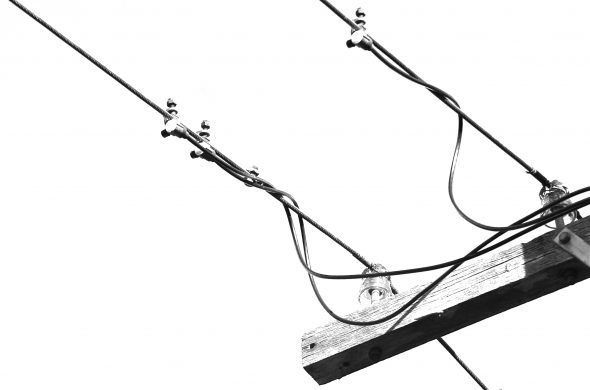WE are part of a vicious technology war on many fronts, as entrenched interests struggle to defend their turf. The fundamental shifts are from traditional physical, centralised technology solutions to a rapidly evolving mix of virtual, decentralised, modular, retail- focused solutions.
In media, we see online versus hard copy battling. In transport, virtual transport via communications and electronic devices compete with physical transport and service provision. In water, traditional large water and sewage networks with large dams and treatment plants confront efficiency, local solutions and even waterless solutions.
In energy, the battle is between traditional centralised energy systems and the combination of virtual solutions, smart management systems, high efficiency and distributed generation. Commentator Giles Parkinson has described the crisis facing the electricity industry as its “Kodak moment’: Kodak was an early leader in digital photography, but couldn’t bring itself to cannibalise its core film business by promoting its new approach. So others did it.
All existing communication, energy, water, and goods and services retailers are desperately trying to develop new business models and undermine, out-compete or absorb competition from agile, mass-produced, consumer-focused alternatives.
A recent paper from energy company AGL (Economic Policy Working Paper 31) revived the 1980s term ‘death spiral’ as it discussed the future of conventional energy companies. Their cost structure is dominated by capital costs and assets that take a long time to build and last a long time. If energy consumption stops growing (or declines) while peak demand keeps rising, they have to spread increasing fixed costs across lower than expected sales.
So they must increase prices and fixed charges to balance their books— but this makes competing options more attractive, which makes the situation even worse: the death spiral.
Policy makers are struggling to understand the emerging reality. For example, they still treat electricity networks as ‘natural monopolies’ and look at emerging technologies in terms of their impacts on the existing electricity industry.
As I pointed out to the Victorian Competition and Consumer Commission, mobile phone businesses are not paid based on how much they save landline networks. So why are emerging energy solutions such as PV paid based on how much they save incumbent electricity companies?
The existing electricity industry faces a fundamental problem: the harder they work to block emerging competitors, the more they encourage new solutions and the greater the risk of pent-up demand for alternatives exploding uncontrollably when costs fall enough and technology works well enough.
PV is a great example: denying PV owners a fair feed-in tariff encourages a shift to including storage and even going off-grid. Major appliance manufacturers such as Samsung are moving into these markets with enormous economies of scale and sophisticated retail marketing capability.
As the AGL paper points out, these developments create potentially serious challenges for social justice policy. Wealthier people are better placed to invest in PV, energy efficiency and storage to manage their costs. AGL points out that, while families with children at home comprise only 16% of their customer base, they are 24% of customers at risk of disconnection. Yet many are not eligible for welfare support. These families are paying the price for succumbing to building industry marketing and government incentives to buy big, inefficient houses on the urban fringe with poor access to public transport and services. So their problems go far beyond their difficulties with electricity bills.
If we focus on reducing peak demand as well as total consumption, the ‘death spiral’ can be managed. As US energy expert Amory Lovins pointed out many years ago, the electricity sector depreciates the value of its assets each year, gaining tax benefits. So as long as they don’t have to build more capacity, they can hold energy prices stable while consumption continues to decline.
As part of our attack on peak demand, we will face a choice between higher fixed charges and time of use (TOU) pricing. TOU is the lesser of two evils, as high fixed charges are regressive and disempowering.
We need to use TOU as part of management of demand, to send signals and manage costs, but we need much more sophisticated and equitable approaches. Victoria’s approach illustrates the problem: consumers pay a high price from 7 am to 11 pm on weekdays. Low income households can’t work around that structure. Alternatives with lower prices from 10 to 2 would allow them to cook a main lunch meal and run appliances. The peak does seem to pass by 7.30 pm, so prices could drop then.
Maybe options with a voluntary limit on peak demand in certain time blocks could also work. In Italy, most households have a 3 kilowatt demand limit—and they think this is pretty normal and reasonable. The Bushlight remote power scheme for Indigenous communities includes negotiated load shedding hierarchies. Their approach shows it’s possible to work with consumers to set priorities to limit peak electricity demand.
As sustainable energy costs decline, there is an increasing financial case for government to deliver social welfare by providing energy efficient equipment and PV systems instead of or as well as traditional energy price reductions. Housing financiers should allow extra funds for higher building efficiency, efficient equipment and PV in their mortgages, and encourage people to consider smaller, more adaptable housing.
This article was first published in ReNew magazine. Reproduced with permission from the author.









